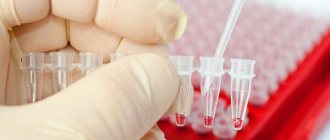May 26, 2020
For patients over 40 years of age, cancer prevention becomes a mandatory procedure. An important tumor indicator is prostate-specific antigen. The protein is produced by the cells of the male gland, its quantity allows us to judge health. What is PSA, what is its norm and how to get tested correctly, specialists from Dr. will tell you. AkNer.
Why is this informative?
The medical definition of PSA indicates that normally the bulk of this protein substance is located in the ducts of the gland. Its task is to provide the desired consistency of the seminal fluid and promote its liquefaction. In healthy men, a small portion of the protein passes from the ductal system into the blood vessels and then into the blood. It is this parameter that is monitored during screening.
An increase in the indicator occurs in response to certain changes in the body. With the development of pathology, the barrier between the blood vessels and the ducts of the gland is broken, which causes massive penetration of protein into the blood.
False results
There are cases when in healthy men the concentration of PSA in the blood significantly exceeds the permissible norm. Prostate tumor marker may be elevated in the following cases:
- if the rules of preparation for the study are violated (eating fatty foods, alcohol, having sexual intercourse shortly before the analysis);
- when taking vitamin complexes with ascorbic acid;
- during chemotherapy;
- when using 5-alpha reductase inhibitors (for example, Finasteride);
- after exposure to the prostate during diagnostic procedures or massage of the organ;
- after prostate biopsy.
If you violate the rules for preparing for the test, doctors recommend that you avoid taking medications and retake the test.

When is diagnosis relevant?
There are PSA standards for men by age. The analysis is prescribed during a routine examination:
- over 40 years of age if they are at high risk of developing prostate cancer;
- over 45 years old, average risk of cancer;
- over 50 years of age, in the absence of risk factors.
In addition, the reasons for ordering an analysis are:
- patient complaints of frequent, difficult or painful urination;
- changes in the size and consistency of the gland, identified by ultrasound or digital examination;
- history of elevated PSA values (more than 2.5 ng/ml);
- associated risks of cancer;
- prostate cancer therapy;
- control of cancer relapse.
The PSA test is very popular because it is informative, reliable, and the procedure does not cause discomfort to the patient.
Detailed description of the study
PSA (prostate specific antigen) is a substance produced by prostate cells and is one of the most sensitive and specific tumor markers. It is used to diagnose prostate cancer, in which the level of total PSA is significantly elevated. In addition, a slight increase in PSA is often observed with prostate adenoma and prostatitis, and to clarify the diagnosis in this case, it is necessary to determine not only total PSA, but also its free fraction (free PSA) and the PSAfree/PSAtotal ratio. With an oncological process, this figure is less than 15%, with a benign disease – more than 15%.
You should know that preventive PSA testing of men over 50 years of age is currently considered mandatory for the purpose of early detection of prostate diseases. In blood serum, prostate-specific antigen is contained in two forms - free and associated with various antiproteases. The free form (f-PSA) content is about 10% of the total PSA. The content of total PSA normally increases with age, however, it should not exceed 4 ng/ml. To clarify the diagnosis in case of suspected prostate cancer, the ratio of free and total PSA fractions is calculated:
Free PSA x 100%/Total PSA
Measuring free PSA and determining the free PSA/total PSA ratio is especially important in the case of small increases in total PSA, ranging from 4.0 to 10.0 ng/mL, at concentrations close to the upper limit of reference values. In benign prostate hyperplasia, the ratio of the free fraction to total immunoreactive prostate-specific antigen is more than 15%. A total PSA value above 30 ng/ml usually indicates the presence of a malignant neoplasm. In patients with advanced prostate cancer and metastases, concentrations of 1,000 ng/ml and higher were noted. A study of the free PSA content is prescribed in addition to the determination of total PSA if it is necessary to calculate the ratio of the free and total PSA fraction.
Preliminary preparation
When answering the question, PSA analysis, what is it, you should know the regulations for its implementation. For the test, venous blood is taken. There are two types of tests: total and free antigen. The first is standard and is prescribed more often, the second is used to clarify the diagnosis.
The analysis requires preliminary preparation. To exclude a false positive result, you must follow the following recommendations from doctors:
- blood is donated no earlier than two weeks after medical manipulations in the genitourinary system and pelvic area;
- before the procedure, avoid ejaculation for 3 days;
- you must stop riding a bicycle or horse three days before the procedure;
- Blood sampling is carried out on an empty stomach.
General and free faction
In medicine, it is customary to distinguish between the free and total tumor marker PSA. What is the difference? Two types of prostate-specific antigen can be found in blood plasma:
- associated with blood serum proteins (trypsins and globulins);
- not bound to blood proteins (free).
Total PSA is the sum of bound and unbound antigens. For diagnosis, the indicator of both total and free fractions is important.
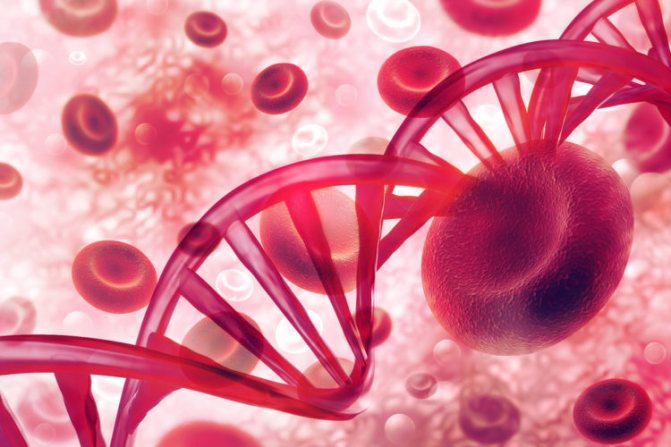
What to do if the indicators are elevated?
Many men are concerned about what a higher than normal PSA means. It is important to remember that a large amount of antigen does not necessarily indicate an oncological process in the body. The analysis is a stage of complex diagnostics, and its results must be interpreted by a doctor.
In addition to prostate cancer, an increase in PSA levels is caused by:
- inflammation of the male gland;
- infarction or ischemia of the prostate;
- impotence;
- urinary tract infection;
- urinary retention;
- ejaculation on the eve of the study;
- adenoma (benign hyperplasia of the gland);
- violation of the rules for preparing for analysis.
Dynamics of changes in total PSA levels over time, PSA V
An important criterion for assessing the pathological process is the dynamics of changes in the level of total PSA over time. This indicator is called PSA V. The increase in PSA levels in prostate cancer occurs at a much faster rate than in BPH (prostate adenoma) or chronic prostatitis. Sarklinik in Saratov believes that the limit for the annual increase in PSA levels over 1 year should be no more than 0.67 ng/ml . That is, the increase in PSA in one year should be a maximum of up to 0.67 ng/ml, compared to the previous year. Over 6 months (if PSA is performed once every 6 months), the increase in PSA level should be no more than 0.33 ng/ml .
Dear patients, if you want to receive detailed information on the following issues, please contact us for a personal consultation in Saratov: what is a tumor marker analysis of a dog, where is a dog’s blood test performed and its decoding , what is the norm, how is the test carried out, where can a dog’s blood test be done and passed, when to get the results, how to prepare for the dog test , what is its cost and price, how to deal with impotence , how to treat early ejaculation? The PSA blood test is a highly informative screening test!
If you are undergoing a routine examination and you are over 45 years old, then take: total PSA, free PSA, prostate health index .
Photo: Rob3000 | Dreamstime.com\Dreamstock.ru
If you have any questions related to PSA, total PSA, free PSA, prostate specific antigen, what is multiparametric MRI of the prostate (mpMRI), PIRADS (Prostate Imaging Reporting and Data System), ask your doctor on the website sarclinic.ru!
Related posts:
Prostatitis: classification, types of prostatitis, forms of prostatitis
Prostate massage and digital rectal examination of the prostate gland
Why is there discharge from the penis, itching, pain, dripping pus, blood, sperm, urine?
PSA, dog test, dog blood test, interpretation, normal, general, free, preparation, delivery
Symptoms of chronic prostatitis in men
Comments ()
PSA and oncology
What the PSA tumor marker shows is interpreted by the doctor in each specific case. According to medical statistics, almost 80% of cases of cancer changes in the prostate gland are accompanied by an increase in this protein. However, its high values may indicate other pathologies, so do not worry in advance. To clarify the diagnosis and exclude oncological degeneration, the doctor will prescribe a transrectal biopsy of the prostate under ultrasound guidance. Histological examination will reliably show whether there are changes in the tissues of the gland.
An increase in PSA is a reason to seek help. Experienced urologists and andrologists at the Dr. AkNer will help to identify pathology in a timely manner and prescribe adequate therapy.
Urologist, andrologist Akopyan Nerses Grigorievich.
Back to list of articles
If PSA is elevated
What to do if a man’s PSA tumor marker exceeds the norm? Only a urologist can interpret and decipher the test results. Experts do not make a definitive diagnosis based on just one prostatic antigen test. If the indicators deviate from the norm, the patient is prescribed the following additional examinations:
- General blood analysis. An increase in the number of leukocytes and ESR levels indicates inflammatory pathologies.
- Prostate biopsy. Using a thin needle, the doctor removes a piece of gland tissue for examination. This allows you to determine the type of tumor.
- MRI or CT scan of the prostate. This study helps determine the size and extent of the tumor.
Only on the basis of a comprehensive examination can a doctor make an accurate diagnosis and prescribe the necessary treatment.
Prostate cancer in its early stages is treated with hormonal drugs. In many cases, this helps stop the growth of the tumor. In advanced cases, the tumor is surgically removed and a course of chemotherapy is prescribed.
Nowadays, there is a new method of treating prostate tumors - virotherapy. Special viruses are injected into the patient's body. They do not harm human health, but at the same time destroy cancer cells. In addition, drugs containing viruses activate the immune system to fight the tumor.
Men are often interested in the question: “How to lower PSA?” It is important to remember that there are no special medications that reduce the production of this protein. It is necessary to treat the underlying disease. Only after completing a course of drug therapy or surgical removal of the tumor does the PSA level return to normal.
Features of prostate cancer and PSA

Prostate cancer is the second most common tumor affecting males. The disease is amenable to surgical and drug treatment, but despite this, it has a high mortality rate. A number of factors contribute to this:
- the tumor develops slowly over several years;
- there are no obvious clinical symptoms until the lesion reaches a certain size;
- gives early multiple metastases;
- cannot be determined visually or using ultrasound.
An ultrasound machine will only show that there is inflammation and changes in the organ, but does not indicate the presence of a tumor. A more accurate diagnosis will be shown by a biopsy or fluoroscopy, which for preventive purposes does more harm to the body than benefit.
Prostate specific antigen is a glycolyzed protein produced by the surface cells of the organ. Its main purpose is to liquefy seminal fluid. In addition to sperm, the substance is part of the blood serum, where it binds to other proteins (bound PSA) or exists unchanged (free PSA). An analysis called total PSA shows the total amount of antigen in 1 ml of material.
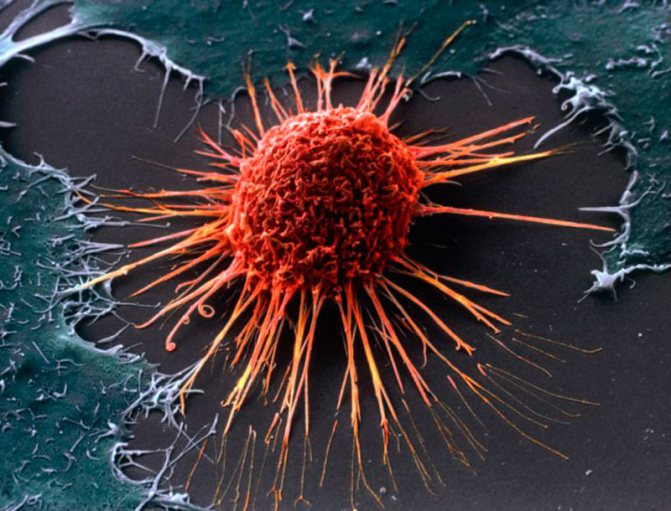
Even a small tumor in the initial stage increases the production of the substance, and this makes it possible to detect cancer at an early stage. The amount of antigen exceeding the permissible norm does not indicate the presence of carcinoma, but is a direct indication for in-depth diagnosis. The value within the age norm 99% confirms the man’s health.
From the editor: Prostatitis: symptoms and causes, treatment methods, prevention, reviews
How to decipher the REA analysis
In order to independently understand the test results, the patient must know the normal values of the CEA tumor marker and have an idea of what a deviation from the norm may mean.
The normal levels of this substance are the same for both sexes; the patient’s age also does not play a role. Normally, the concentration of CEA in the body of a man or woman should not exceed 6.5 ng/ml. Normal CEA values in blood serum indicate a low risk of developing cancer. The result may also be due to the fact that the testing is not sensitive to a specific tumor type.
What does exceeding the REA norm indicate?
If the levels of cancer embryonic antigen in the patient’s test results exceed the norm, this may be a signal of the following diseases:
- cancer of the rectum, colon;
- cancer of the stomach, pancreas;
- lungs' cancer;
- mammary cancer;
- cancer of the uterus, cervix, ovaries;
- spread of tumor metastases to bone tissue, liver;
- recurrence of cancer.
An increase in CEA values is not always evidence of the presence of cancer in the patient’s body. The level may also increase due to the development of benign diseases:
- liver cirrhosis, chronic hepatitis;
- chronic renal failure;
- chronic pancreatitis;
- colorectal polyps;
- tuberculosis;
- ulcerative colitis;
- Crohn's disease;
- emphysema, pneumonia, chronic bronchitis;
- autoimmune diseases;
- cystic fibrosis;
- rheumatoid arthritis;
- ovarian and breast cysts.
In addition, a slight increase in the values of the CEA tumor marker in test results is possible if the patient smokes or suffers from alcoholism. A slight increase in the concentration of antigen in the patient’s blood may indicate benign diseases in the acute stage, but the initial stage of the development of cancer cannot be completely excluded.
A serious increase in CEA concentration is observed in the presence of malignant tumors. If metastases are present, the rate can increase tenfold. If the indicators of this tumor marker increase in dynamics, which is detected during repeated tests, this indicates the low effectiveness of treatment directed against the malignant disease, the development of relapse, the onset of metastasis (often detected 3-6 months before the onset of clinical symptoms of metastases).
What can we say about the decrease in REA indicators?
The concentration level of this substance in the patient’s body may also decrease, which usually indicates the following:
- the patient underwent surgical removal of a malignant tumor;
- effective therapy for cancer was carried out;
- the benign tumor is in remission.
It is important to know
A positive result of examining a patient for a tumor marker of cancer embryonic antigen cannot yet be considered as a sufficient basis for making a medical verdict. This is just an indicator for further examination. Also, a negative CEA test result does not at all prove that the patient does not have cancer.
It is also worth considering that research methods in different laboratories may differ, which leads to different results. Therefore, doctors recommend repeat testing in the same medical center where the first analysis for the CEA tumor marker was done. The price of research for the CEA tumor marker depends on the specific laboratory.
<
p style=”text-align: justify;”>

Features of prostate cancer and PSA
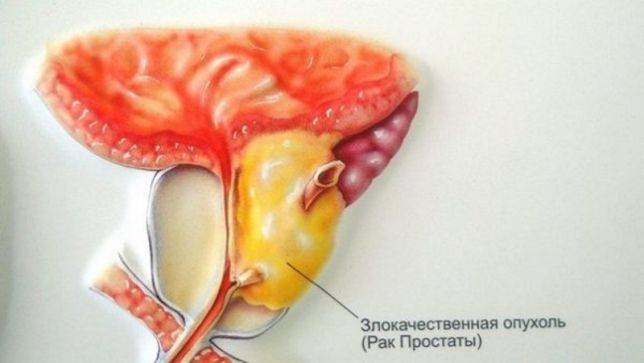
Prostate cancer is the second most common tumor affecting males. The disease is amenable to surgical and drug treatment, but despite this, it has a high mortality rate. A number of factors contribute to this:
- the tumor develops slowly over several years;
- there are no obvious clinical symptoms until the lesion reaches a certain size;
- gives early multiple metastases;
- cannot be determined visually or using ultrasound.
An ultrasound machine will only show that there is inflammation and changes in the organ, but does not indicate the presence of a tumor. A more accurate diagnosis will be shown by a biopsy or fluoroscopy, which for preventive purposes does more harm to the body than benefit.
Prostate specific antigen is a glycolyzed protein produced by the surface cells of the organ. Its main purpose is to liquefy seminal fluid. In addition to sperm, the substance is part of the blood serum, where it binds to other proteins (bound PSA) or exists unchanged (free PSA). An analysis called total PSA shows the total amount of antigen in 1 ml of material.
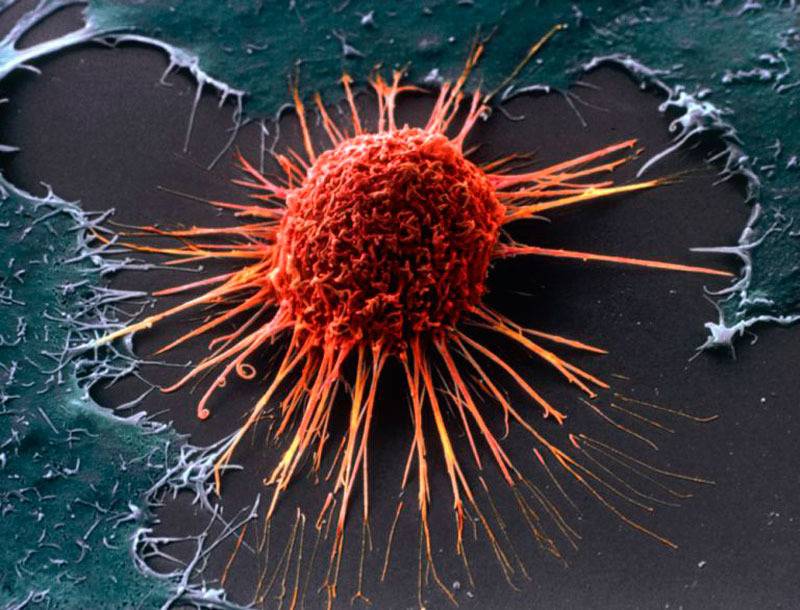
Even a small tumor in the initial stage increases the production of the substance, and this makes it possible to detect cancer at an early stage. The amount of antigen exceeding the permissible norm does not indicate the presence of carcinoma, but is a direct indication for in-depth diagnosis. The value within the age norm 99% confirms the man’s health.
